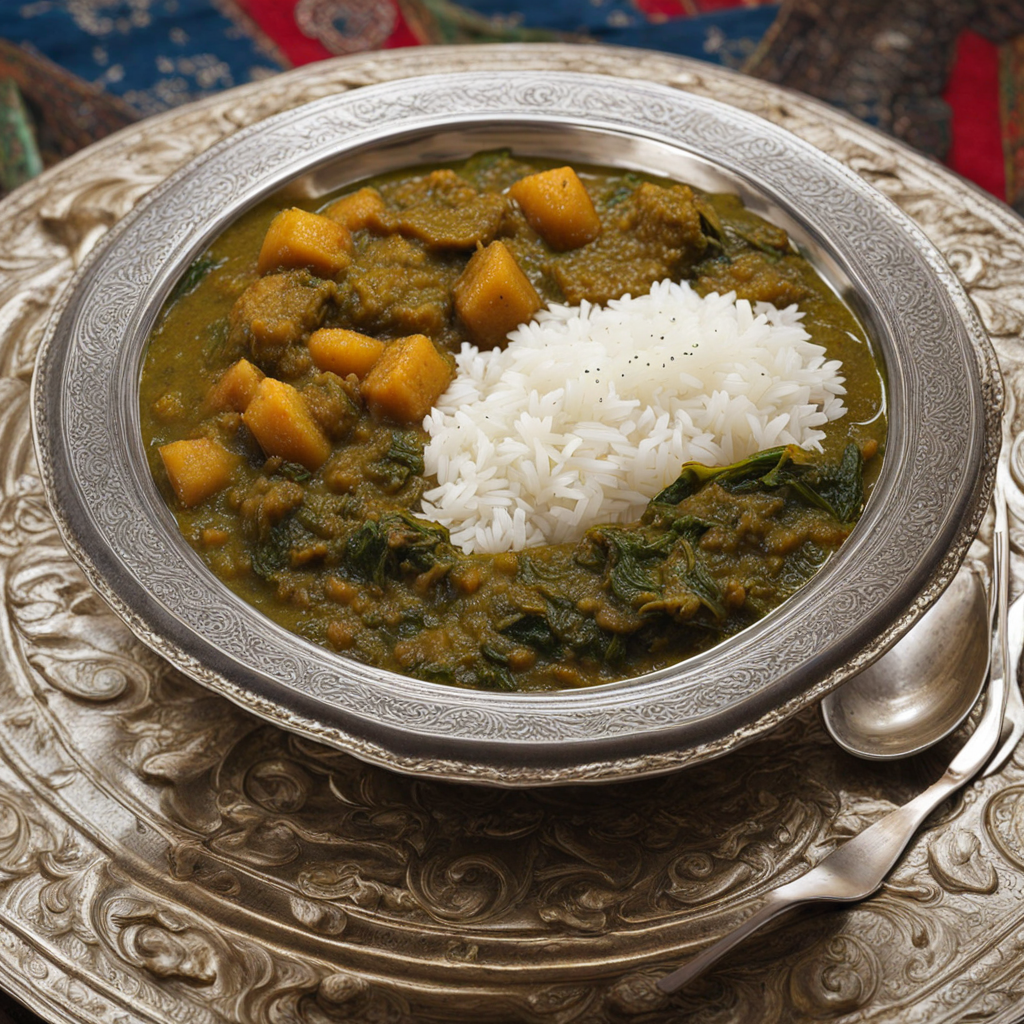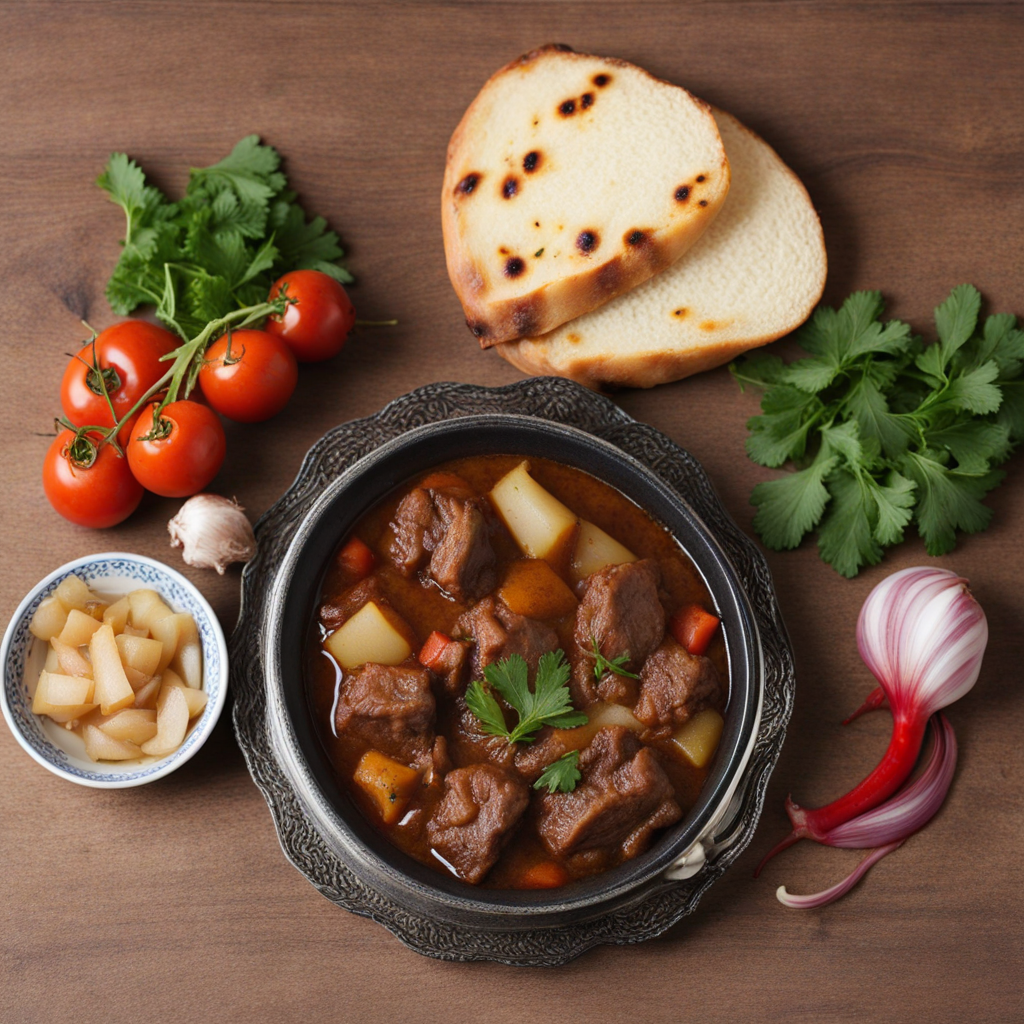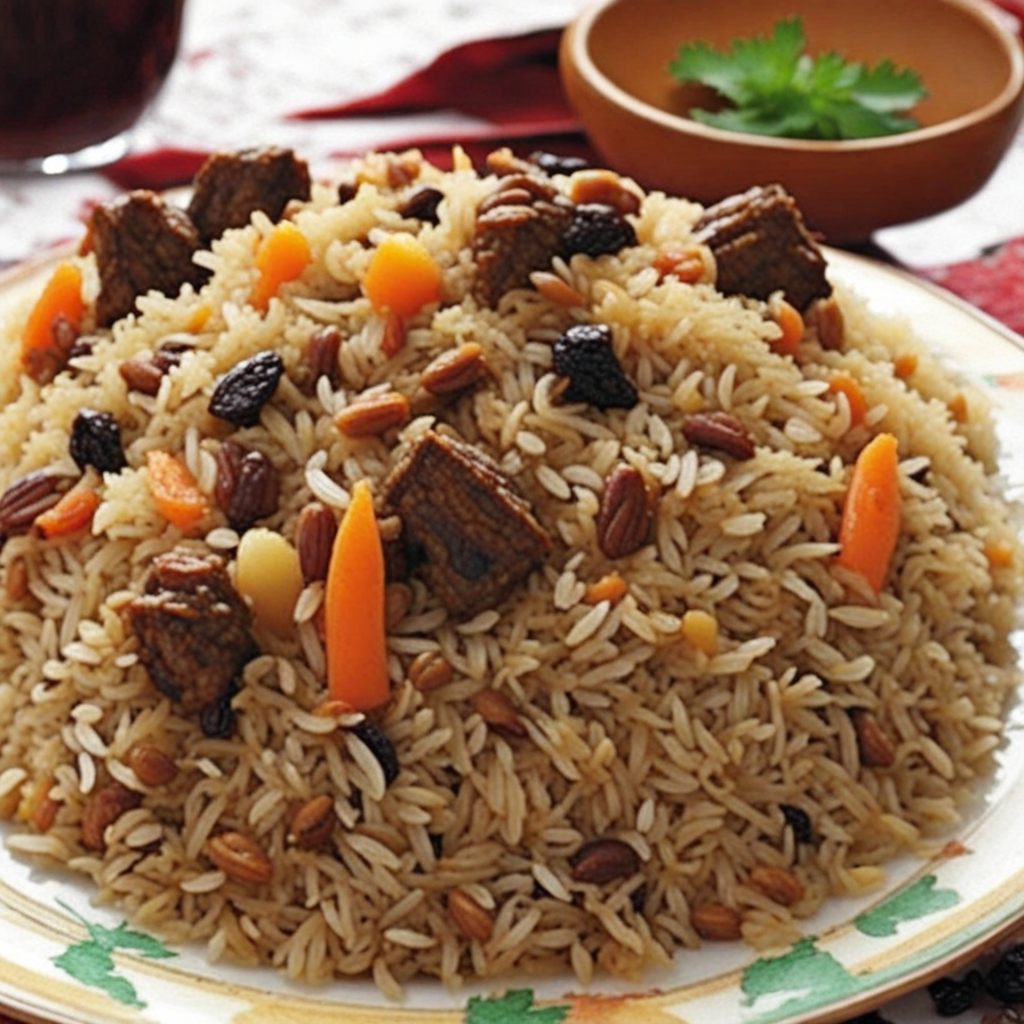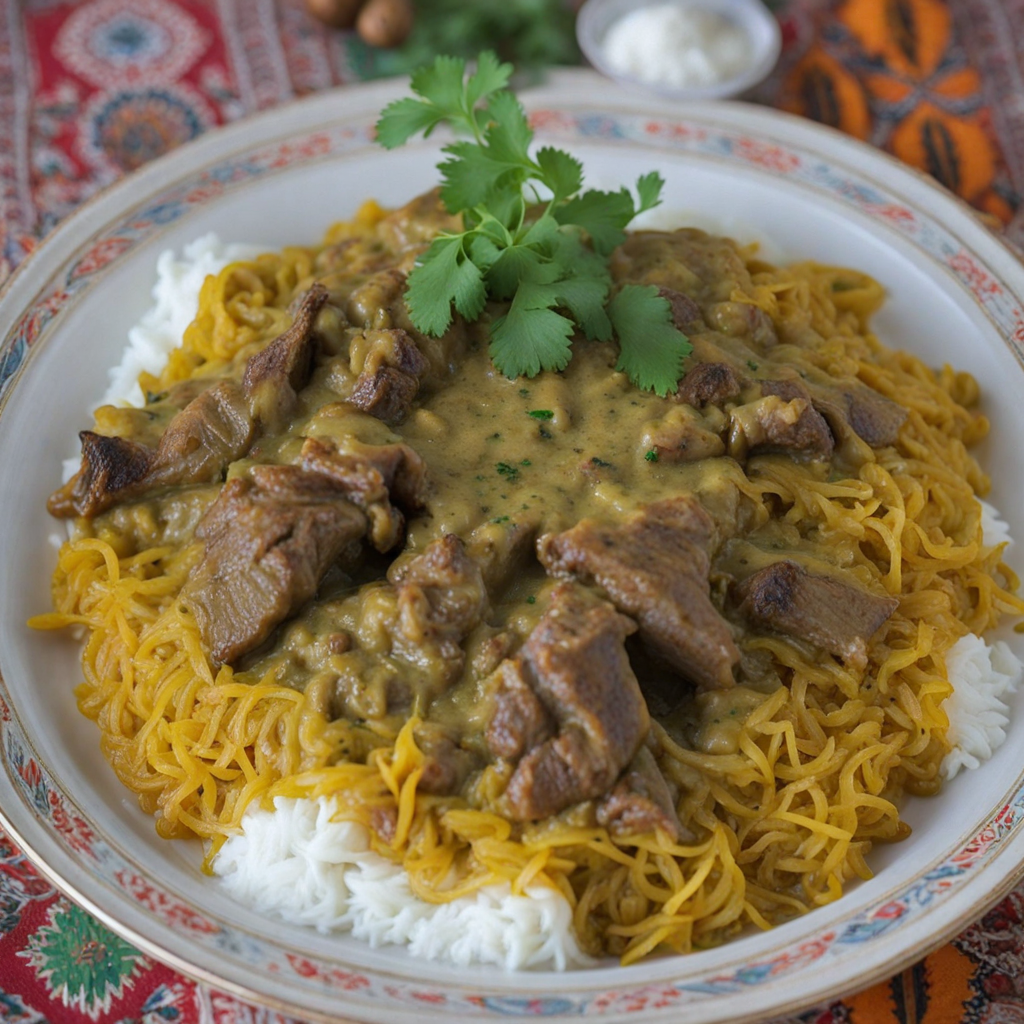Sabzi Challow
Sabzi Challow is a delightful Afghan dish that showcases the vibrant flavors and rich culinary traditions of Afghanistan. At its heart, this dish features tender, sautéed greens, typically made from a variety of leafy vegetables such as spinach, mustard greens, or chard, which are cooked with aromatic spices like garlic, onions, and a hint of coriander. The greens are often seasoned with a touch of lemon or lime juice, providing a refreshing contrast to their earthy flavors. This dish is not only delicious but also packed with nutrients, making it a wholesome addition to any meal. Served alongside fluffy basmati rice, Sabzi Challow creates a harmonious balance of textures and tastes. The rice is usually steamed to perfection, allowing each grain to remain separate and light, while absorbing the essence of the greens when combined. A drizzle of ghee or a sprinkle of fried onions often enhances the dish, adding a rich, buttery flavor that elevates the overall experience. The warming spices and fresh herbs used in the preparation provide a comforting aroma that invites you to dive into this culinary delight. Often accompanied by a side of yogurt or a tangy salad, Sabzi Challow offers a well-rounded meal that can be enjoyed on its own or as part of a larger spread. Its vibrant colors and enticing flavors make it an excellent choice for those looking to explore the diverse taste of Afghan cuisine. Whether you're a seasoned foodie or just beginning your culinary journey, Sabzi Challow is sure to leave a lasting impression with its unique combination of simplicity and depth.
How It Became This Dish
Origin of سبزی چلو سبزی چلو, a quintessential Afghan dish, is a flavorful combination of rice and mixed greens that has deep roots in the culinary traditions of Afghanistan. The word "چلو" (chalo) refers to rice, which has been a staple food in the region for centuries, while "سبزی" (sabzi) translates to greens or vegetables. The origins of سبزی چلو can be traced back to the agricultural practices of the Afghan people, where the cultivation of rice and various green vegetables was integral to their diet. Historically, Afghanistan has been a crossroads of trade and cultural exchange, influenced by various civilizations such as the Persians, Greeks, and later, the Mughals. These interactions enriched the local cuisine, incorporating diverse ingredients and cooking techniques. The use of fresh herbs and greens in Afghan cooking has been prevalent for generations, with سبزی چلو embodying this tradition by highlighting the vibrant flavors of local produce. \n\n Cultural Significance The cultural significance of سبزی چلو extends beyond mere sustenance; it is a symbol of Afghan hospitality and communal dining. Typically served during special occasions and gatherings, this dish represents the warmth and generosity of Afghan culture. The preparation of سبزی چلو often brings families together, as they engage in the time-honored practice of cooking and sharing meals, reinforcing social bonds and traditions. In Afghanistan, سبزی چلو is often served with a variety of accompaniments, such as meat dishes, yogurt, and pickles, enhancing the overall dining experience. The greens, which can include spinach, dill, and other seasonal vegetables, are sautéed with spices, providing a depth of flavor that complements the fluffy rice. This dish not only serves as a nourishing meal but also as a canvas for expressing regional variations, as different provinces may incorporate local ingredients or unique cooking methods. \n\n Development Over Time Over time, سبزی چلو has evolved, reflecting the agricultural cycles and regional biodiversity of Afghanistan. The dish has adapted to incorporate seasonal vegetables, which can change based on what is available in local markets. For instance, during the spring, one might find سبزی چلو garnished with fresh herbs like coriander and green onions, while in the winter months, heartier greens such as kale or chard may take precedence. As Afghanistan faced political upheavals and conflicts throughout the 20th century, the culinary landscape also underwent changes. Refugees and diaspora communities carried their food traditions with them, leading to the globalization of Afghan cuisine. In places like the United States, Europe, and Australia, سبزی چلو has found a new audience, adapted to local palates but retaining its essential characteristics. Afghan restaurants abroad often feature سبزی چلو on their menus, introducing it to a wider audience and fostering appreciation for Afghan culinary heritage. \n\n Regional Variations Within Afghanistan, there are notable regional variations of سبزی چلو, each with its distinct twist. In the northern provinces, for example, the dish may be prepared with a richer blend of spices, reflecting the region's Persian influences. In contrast, southern regions may emphasize the use of aromatic spices like cumin and coriander, creating a different flavor profile. These variations speak to the diverse culinary practices across Afghanistan, highlighting how local ingredients and cultural influences shape each version of سبزی چلو. Additionally, the way سبزی چلو is served can vary significantly. In some regions, it may be presented in a more formal setting, accompanied by elaborate meat dishes like lamb or chicken, often marinated in spices and slow-cooked to perfection. In other areas, it may be enjoyed in a more casual setting, served alongside simple ingredients like yogurt and freshly baked bread. This adaptability allows سبزی چلو to maintain its relevance across different social contexts and occasions. \n\n Modern Culinary Influence In the modern culinary landscape, the rise of food culture and the interest in international cuisines have further popularized سبزی چلو. With a growing awareness of healthy eating, many are drawn to the dish's emphasis on vegetables and whole grains. The increasing availability of Afghan ingredients in global markets also facilitates the preparation of authentic سبزی چلو, allowing home cooks and chefs alike to explore this traditional dish. Social media platforms have played a pivotal role in showcasing Afghan cuisine, with visual storytelling capturing the beauty and vibrancy of dishes like سبزی چلو. Home cooks and chefs share their interpretations, often highlighting the communal aspect of preparing and enjoying this dish. This digital renaissance not only preserves the culinary heritage of Afghanistan but also invites a new generation to connect with their roots through food. \n\n Conclusion of Culinary Journey In summary, سبزی چلو serves as a testament to the resilience and adaptability of Afghan culinary traditions. Its origins are deeply embedded in the agricultural practices of the region, while its cultural significance is tied to the values of hospitality and community. Through its evolution over time, سبزی چلو has managed to remain relevant, both within Afghanistan and in the global culinary scene. The dish is more than just a meal; it is a celebration of Afghanistan's rich cultural heritage and a symbol of the enduring power of food to bring people together.
You may like
Discover local flavors from Afghanistan







